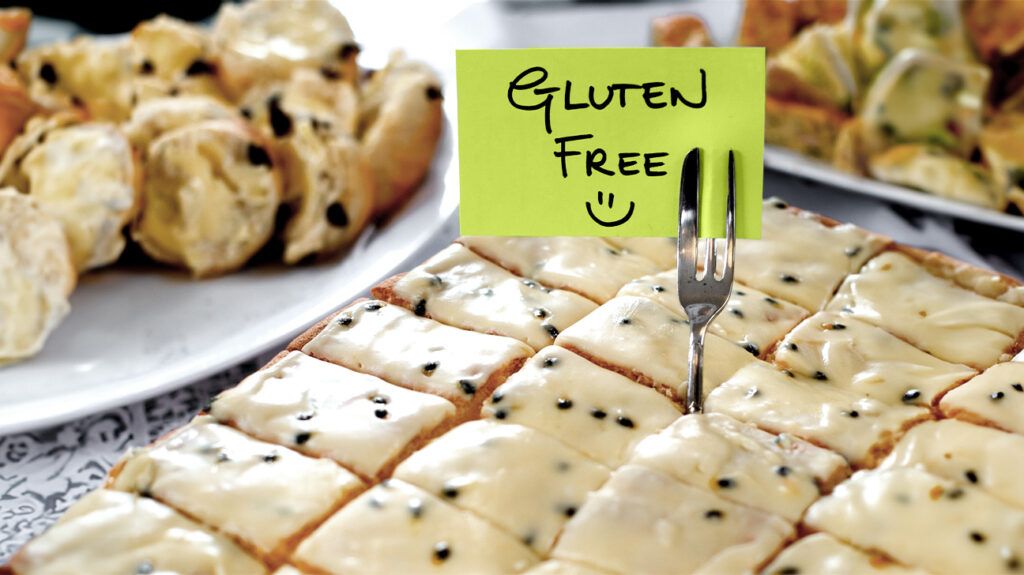Celiac disease (CD) is a condition in which a person’s immune system attacks their body’s own tissues after eating gluten. Gluten intolerance is different and occurs when people feel unwell after eating gluten.
Gluten is a protein that provides binding and structure to products containing different grains, including wheat, barley, and rye. It is safe for many people to consume, but some experience health problems when eating foods that contain it.
Gluten intolerance, also known as gluten sensitivity or non-celiac gluten sensitivity (NCGS), occurs when people experience fatigue, discomfort, and some digestive symptoms after eating products that contain gluten. Reducing gluten intake or removing gluten from the diet resolves these symptoms.
CD is an autoimmune disorder in which the body destroys gut tissue after a person consumes gluten. People with celiac should avoid products with gluten or those that have come into contact with gluten during manufacturing.
This article explores both conditions in more detail, including their causes, symptoms, diagnosis, and treatment.

The body’s reactions to gluten play a key role in the underlying causes of both CD and gluten insensitivity. Examples of foods with gluten include:
- wheat products, including baked goods, bread, and pasta
- barley products, such as beer, food colorings, and malt
- rye products, like bread and cereals
Products containing oats may also have experienced cross-contamination with gluten during transport, meaning that some may trigger an immune response in people with CD. However, individuals with CD usually tolerate specifically gluten-free oat products well.
However, the underlying causes of the different reactions of those with CD and those with NCGS vary.
Causes of celiac disease
CD
Causes of gluten intolerance
Research into the causes of NCGS is ongoing. However, gluten may not be the trigger for people with NCGS, with other components of wheat, such as amylase-trypsin inhibitors (ATIs) or fructans, playing a possible role. Gluten is a definite trigger for CD.
Research suggests that gastrointestinal (GI) infections, surgery, and some medications
CD and NCGS symptoms vary. People with CD experience a variety of symptoms across the whole body. NCGS symptoms are similar, but they may also involve more non-GI symptoms.
Symptoms of celiac disease
CD’s GI symptoms are
- bloating and gas
- constipation
- loose stools that have a greasy quality and foul odor
- lactose intolerance
- nausea
- vomiting
- belly pain
CD damages the gut, which can affect how a child absorbs nutrients during a crucial time for growth. This can lead to the following effects:
- tooth enamel damage
- delayed puberty
- less weight gain and slower growth than doctors would expect for a child’s age
- shifts in mood, including irritability
- unintentional weight loss
Some individuals with CD experience non-GI symptoms, including:
- fatigue
- bone pain
- joint pain
- dermatitis herpetiformis
- mental health problems, like anxiety and depression
- mouth symptoms, including dry mouth and canker sores
- nervous system issues, like headaches, balance problems, and seizures
- reproductive problems, including delayed menstruation, infertility, or regular miscarriages
Gluten intolerance symptoms
The symptoms of NCGS often include:
Doctors
- medical history, which includes asking about symptoms and related conditions
- family history
- physical exam
They may also carry out a range of tests, including:
- blood tests
- small intestine biopsy
- skin biopsies
- genetic testing
No specific test can identify NCGS. If people have gluten in their diet but do not test positive for CD, a doctor may diagnose NCGS.
Healthcare professionals may recommend a gluten-free diet, and if symptoms improve when a person follows the diet, this will likely confirm NCGS.
The only way to treat either CD or NCGS is to follow a gluten-free diet. People with these diets will need to
They may also want to keep their food separate from gluten-containing foods and prepare their food separately, avoiding any shared serving utensils, cutting boards, ovens, and toasters.
Gluten-free foods that may be safe for people with CD and NCGS to eat include:
- fruits and vegetables
- milk, cheese, butter, and most other dairy products
- rice and rice noodles
- meat and fish (without batter or breadcrumbs)
- gluten-free flours such as rice, soy, potato, and corn four
CD and NCGS both occur due to problems processing the protein gluten. The exact causes of both are not clear, but genetics play a role in CD development. CD occurs when the immune system attacks gut tissue after exposure to gluten.
Both conditions cause a range of symptoms, including constipation, gas, and abdominal pain. Treatment for both involves following a gluten-free diet for life.
People should contact a doctor if they experience any symptoms of either condition.
